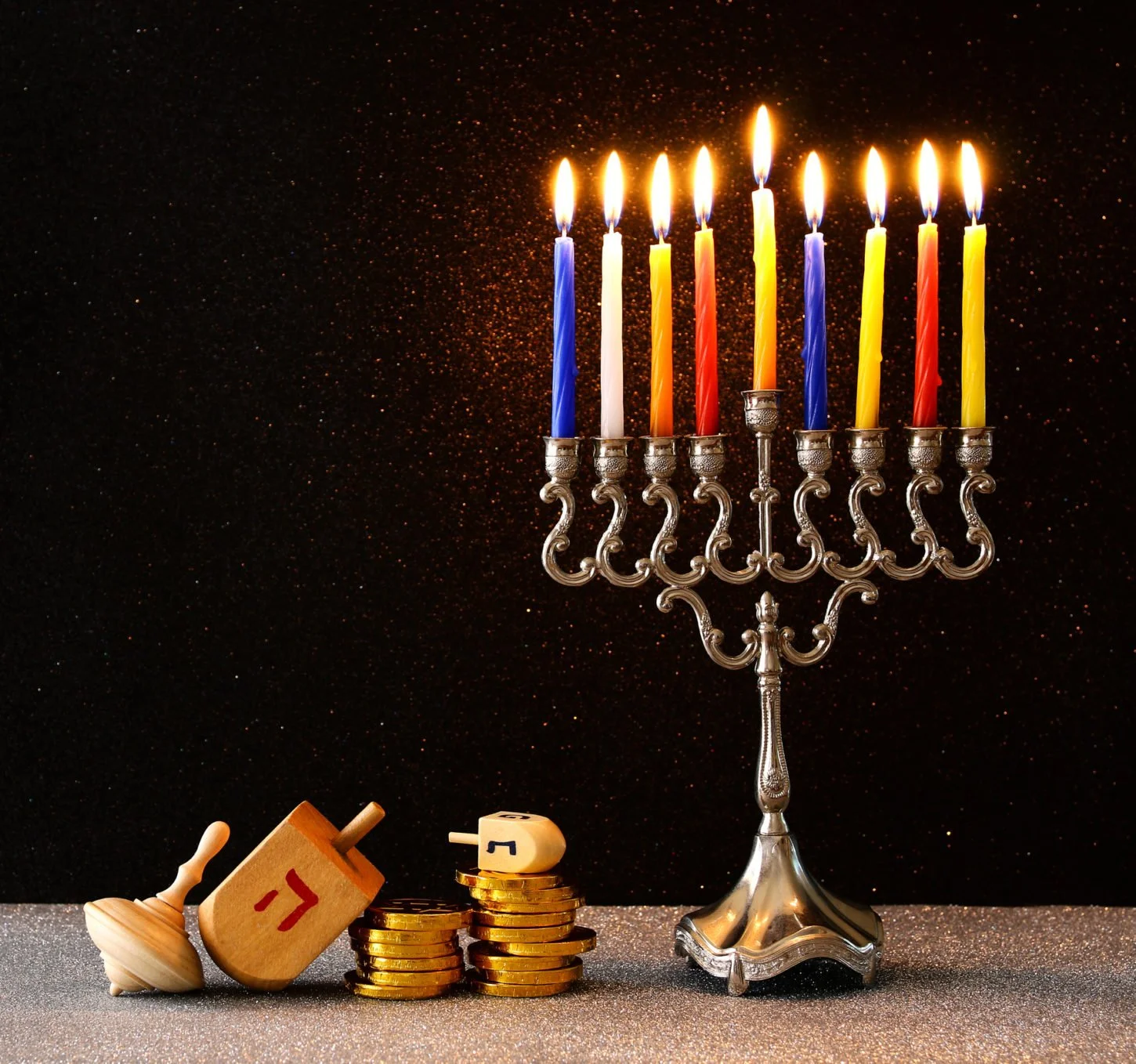Did you know dreidel began as a game in Northern Europe?
There is no shortage of origin stories for dreidel. The popular spinning top with Hebrew letters has two oft-repeated origin stories that give the game a solid Jewish context. One depicts the game being devised to outsmart the Syrian-Greeks seeking to stop Torah learning during the era of Chanukah. The story continues – Children would play this seemingly silly game if they were discovered gathering together to learn Torah. After the miracle of Chanukah, the letters put on the dreidel summarized the tale: Nes Gadol Hayah Sham: a great miracle happened there. Another version of the game’s origins explains the four-sided top as a metaphor representing the four corners of the world; the handle at the top is God’s control, and the point at the bottom is the Nation of Israel. When it spins, it demonstrates our exiled path through many lands while Israel and God remain stationary. The letters show that wherever we go in the world, miracles save us from evil. Nations and other cultures come and go in a spinning blur, but the Jewish People and God remain eternal, which is the message of Chanukah.
However, traditional Jewish texts do not reference the game until the 1700s, and therefore, the two origin stories above are spurious. The earliest records we have about a game similar to dreidel is totum (or teetotum) played in England and Ireland in the midwinter months of the 1500s.Totum featured letters on a four-sided top indicating what action the players should take. When the game migrated to Germany, the letters were translated into German actions, namely N = Nicht = do nothing; G = Ganz = get all (of the pot); H = Halb = get half (of the pot), and S = Shtell ein = put in (money into the pot). The actions from the top transposed into the Yiddish/Hebrew letters read Nun, Gimmel, Hey, and Shin. The game, renamed dreidel in Yiddish, imposed itself into Chanukah and made its way to Jewish communities that did not speak Yiddish. They promptly reinterpreted the letters as Nes Gadol Hayah Sham: a great miracle happened there.
Latkes have always been eaten with applesauce and sour cream, right?
Not so fast. Sour cream and latkes is a recent custom. Here’s why... Eating fried foods on Chanukah pays homage to the miracle of the oil in the Temple and has been commonplace for centuries. Even by the 12th Century, Rabbi Maimon (the father of Rambam) exhorted people to give honor to the fried foods of the holiday since the custom was ancient. Latkes, specifically, have a much later origin. Potatoes are a “new world” food. They did not become part of the Eastern European diet until after the famine of 1839 when Ukraine and Poland planted the quick growing crop which led to recipes for latkes and potato kugel. Latkes were likely originally topped with applesauce rather than sour cream since the fat used to fry the latkes was schmaltz (bird fat) and most Jews would not mix meat and milk.
What’s the connection between Sufganiyot and the early formation of the Jewish state?
Some spin a tale that sufganiyot were what God served Adam and Eve after exiling them from the Garden of Eden to comfort them – the word sufganiyah (singular for donut) breaks down to sof (end of), gan (Garden of Eden), and Y-ah (the last two letters of, and one of God’s names). Adam and Eve received comfort food from God after leaving the Garden of Eden. So, it appears that eating empty calories to bury bad feelings has ancient roots.
Since eating fried foods on Chanukah goes way back, Jews had multiple versions of caloric goodness from which to choose. A recipe appears in the late 1400s for a Christmas treat in which the Jews substituted goose fat for lard and ate jam sandwiches in fried dough which developed into pastries and donuts in other parts of Europe by the 1800s. But during the 5th Aliyah to the Holy Land (1930s), sufganiyot played a political role. The Histadrut Labor Federation championed the delicacy to create jobs for its members. When made by hand kneading and fried manually, together with broad distribution, the production created multiple opportunities for employment. The pastry caught on and became synonymous with celebrating Chanukah in Israel.
What is the minimum requirement for gifts on Chanukah?
We have writings going back to the 1600s that extol the practice of giving poor yeshiva boys money during Chanukah, assumedly for books or extra treats for the holiday. This developed into the widespread custom of giving coins to children called Chanukah Gelt. Whether this was to increase joy, support playing dreidel, or purchase religious objects, the practice travelled with Jews to the New World. In the 20th Century, the coins became chocolate, and we adopted our Christian neighbors’ practice of giving gifts at this time of year. So the rabbinic minimum for giving gifts is zero. Perhaps this was a bit of a trick question.
Why is the holiday called Chanukah?
The word Chanukah means ‘dedication’. This refers to the rededication of the Temple to God after the Maccabees defeated the Syrian-Greeks and purified the desecrated Temple. There are multiple word plays on the word Chanukah: Chanu kaf-hey: they camped on the 25th (of Kislev, the day that Chanukah begins); or Chet Nairot V’Hahalachah K’Beit Hillel, meaning 8 candles and the law is like Beit Hillel (proceeding from 1 candle to 8 candles rather than 8 to 1, as suggested by Beit Shammai.) However you celebrate or spell Chanukah, we wish you an amazing holiday filled with love, light, and oil.


